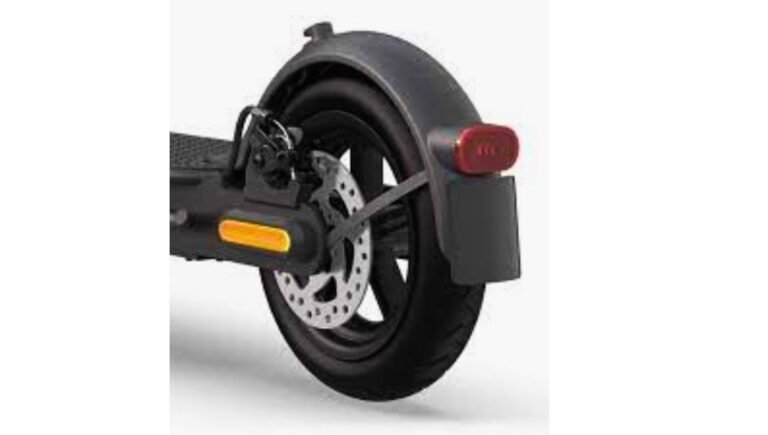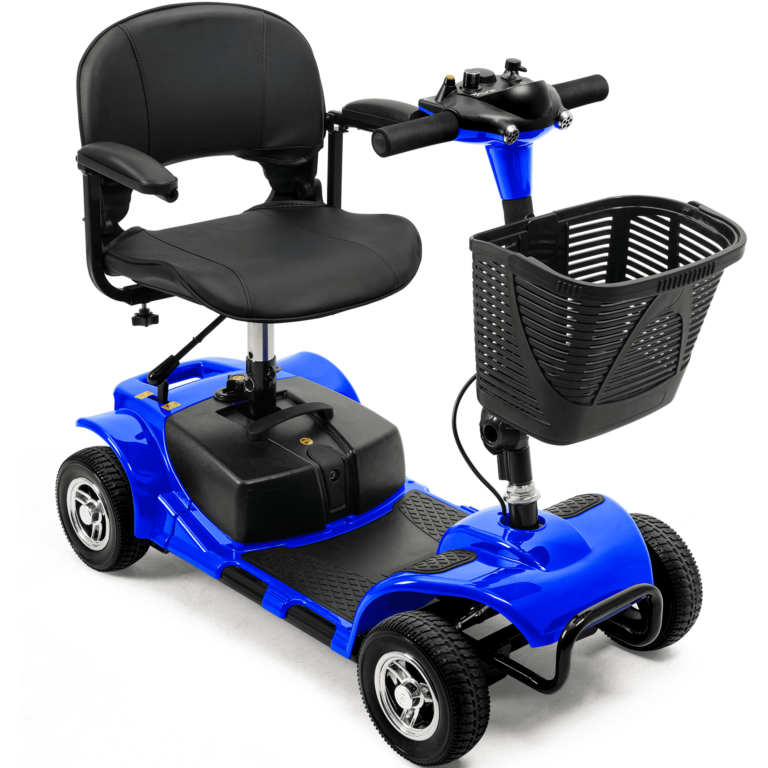Can You Ride an E-Scooter on the Road? Laws Unveiled
Yes, you can ride an e-scooter on the road. E-scooters are legal for road use in many places.
They provide a convenient and eco-friendly mode of transportation for short distances. However, it’s important to check the local regulations regarding e-scooter use on the road. Some areas may have specific rules and restrictions, such as speed limits and designated lanes for e-scooter riders.
Additionally, wearing protective gear and following traffic laws is essential for safe e-scooter riding on the road. Understanding the legal requirements and safety measures will ensure a smooth and enjoyable e-scooter experience on the road.
Introduction To E-scooter Popularity
E-scooters are gaining popularity as a convenient mode of transportation, but can you legally ride one on the road? Regulations vary by location, so it’s important to check local laws before taking your e-scooter for a spin in public areas.
Be sure to prioritize safety and follow all guidelines to enjoy a smooth ride.
E-scooters have become a popular mode of transportation in recent years, especially in urban areas. They are a great alternative to traditional transportation methods such as cars, buses, and bikes. The convenience and affordability of e-scooters have made them a favorite among commuters. However, the legality of riding e-scooters on the road is still a topic of debate. In this article, we will discuss the rise of e-scooters in urban areas and the benefits they offer to commuters.
Rise Of E-scooters In Urban Areas
E-scooters have become a common sight in urban areas around the world. They are easy to use and provide a quick and cost-effective way to travel short distances. The rise of e-scooters can be attributed to the increasing demand for sustainable transportation options. Many cities are implementing bike lanes and other infrastructure to support the use of e-scooters. Companies like Lime, Bird, and Spin have become popular in the e-scooter market, providing rental services to commuters.
Benefits Of E-scooters For Commuters
E-scooters offer several benefits to commuters. They are an eco-friendly mode of transportation, producing zero emissions. E-scooters are also cost-effective, saving commuters money on gas, parking, and maintenance. They are easy to use, with no special license or training required. E-scooters are also a great way to avoid traffic, as they can easily maneuver through busy streets and sidewalks. Overall, e-scooters provide a convenient, affordable, and sustainable transportation option for commuters in urban areas.
In conclusion, e-scooters have gained popularity in recent years due to their convenience and affordability. They offer several benefits to commuters, including eco-friendliness, cost-effectiveness, and ease of use. With the increasing demand for sustainable transportation options, e-scooters are expected to continue to rise in popularity in urban areas.
E-scooter Road Legality
Riding an e-scooter on the road is subject to specific laws and regulations, varying by country and state.
Varied Laws By Country And State
The legality of riding e-scooters on roads depends on individual countries and states.
Public Roads Vs. Bike Lanes
E-scooters may be allowed on public roads or designated bike lanes, depending on local regulations.
Safety Regulations For E-scooters
Riding an e-scooter can be a convenient and eco-friendly way to get around town. However, it’s important to remember that e-scooters are classified as motor vehicles and are subject to certain safety regulations. Let’s take a closer look at some of the key safety regulations for e-scooters.
Helmet And Gear Requirements
Wearing a helmet while riding an e-scooter is not only a good idea, it’s also required by law in many places. In addition to a helmet, it’s also recommended that riders wear other protective gear such as knee and elbow pads. Not only will this help protect you in the event of a fall, but it can also help you feel more confident and in control while riding.
Speed And Age Restrictions
Another important safety regulation to keep in mind is the speed and age restrictions for e-scooters. In most places, e-scooters are limited to a maximum speed of around 15-20 mph. Additionally, many places have age restrictions in place, with riders typically needing to be at least 16 years old to legally ride an e-scooter.
Other Safety Considerations
In addition to the above regulations, there are a few other safety considerations to keep in mind when riding an e-scooter. For example, it’s important to always be aware of your surroundings and to ride defensively. Additionally, you should never ride an e-scooter while under the influence of drugs or alcohol.
| Regulation | Requirement |
|---|---|
| Helmet and Gear | Wearing a helmet and other protective gear is required by law in many places |
| Speed | E-scooters are typically limited to a maximum speed of around 15-20 mph |
| Age | Riders are typically required to be at least 16 years old to legally ride an e-scooter |
- Always wear a helmet and other protective gear while riding an e-scooter
- Be aware of your surroundings and ride defensively
- Never ride an e-scooter while under the influence of drugs or alcohol
E-scooter Operation Guidelines
Operating an e-scooter on the road requires adherence to specific guidelines to ensure the safety of riders and other road users. These guidelines encompass rider conduct, parking and storage protocol, and other key considerations that e-scooter users need to be aware of.
Rider Conduct
Riders of e-scooters must adhere to specific conduct guidelines to ensure safety and responsible usage.
Parking And Storage Protocol
Proper parking and storage of e-scooters are essential to prevent obstructions and maintain a tidy public space.
Insurance And Liability
Riding an e-scooter on the road raises questions about insurance and liability coverage. It’s essential to check local laws and regulations to ensure you’re adequately protected in case of accidents or damages. Understanding your insurance options is crucial for safe and legal e-scooter use on public roads.
Insurance Policies For Riders
When it comes to riding an e-scooter on the road, it is important to consider insurance and liability. As an e-scooter rider, it is crucial to understand the insurance policies available to protect yourself and others in case of an accident or damage.
Accident And Damage Coverage
One of the main concerns for e-scooter riders is the potential for accidents and damage. Luckily, there are insurance policies that can provide coverage in such situations. These policies typically offer protection for both personal injury and property damage.
In the case of personal injury, the insurance policy may cover medical expenses, rehabilitation costs, and even lost wages if the rider is unable to work due to the accident. This coverage provides peace of mind, knowing that you are financially protected if you sustain injuries while riding an e-scooter on the road.
Additionally, insurance policies may also cover property damage. This means that if you accidentally collide with another vehicle or cause damage to someone else’s property, the insurance can help cover the repair costs. Having this coverage can prevent a significant financial burden and potential legal liabilities.
Understanding Liability
Liability is an important aspect to consider when riding an e-scooter on the road. If you are involved in an accident and found to be at fault, you may be held liable for any injuries or damages caused. This is where insurance plays a crucial role.
By having an insurance policy that covers liability, you can protect yourself from potential lawsuits and the financial implications that may arise. The liability coverage can help pay for legal fees, settlements, or judgments if you are found responsible for the accident.
It is worth noting that the specific coverage and limits of liability may vary depending on the insurance provider and policy. Therefore, it is important to thoroughly review and understand the terms of your insurance policy to ensure you have adequate protection.
In conclusion, insurance and liability are essential considerations for e-scooter riders on the road. Having the right insurance policy can provide peace of mind and financial protection in the event of an accident or damage. By understanding the available insurance policies and their coverage, riders can ride confidently and responsibly.
The Debate Around E-scooters
Electric scooters, or e-scooters, have become a popular mode of transportation in urban areas. However, their presence on the roads has sparked a heated debate. Let’s explore the public sentiment and concerns as well as the environmental impact of e-scooters.
Public Sentiment And Concerns
Public opinion about e-scooters is divided. Some people appreciate their convenience, while others express concerns about safety and sharing the road with traditional vehicles. Pedestrians worry about e-scooters weaving through foot traffic, while drivers are concerned about potential accidents and the behavior of e-scooter riders. Additionally, there are fears about the impact of e-scooters on existing bike lanes and sidewalks.
Environmental Impact
E-scooters are often touted as an environmentally friendly mode of transportation. They produce zero emissions and can help reduce reliance on cars for short trips. However, there are environmental concerns related to the manufacturing and disposal of e-scooters, as well as the energy sources used to charge them. It’s important to consider the full lifecycle of e-scooters when evaluating their environmental impact.
Case Studies: Cities With E-scooter Programs
Exploring the impact of e-scooter programs in various cities reveals valuable insights. Let’s delve into the experiences of different urban areas with e-scooter initiatives:
Success Stories
In Austin, e-scooter usage led to a 20% decrease in car trips.
Portland saw a 15% reduction in greenhouse gas emissions due to e-scooter adoption.
Challenges Faced
- Infrastructure: Lack of dedicated lanes for e-scooters.
- Safety Concerns: Increase in accidents and injuries.
- Regulations: Difficulty in enforcing e-scooter rules.
Future Of E-scooters And Urban Mobility
The integration of e-scooters into urban transportation is reshaping the way people move around cities. Let’s explore how technological advancements and potential law reforms are shaping the future of e-scooters and urban mobility.
Technological Advancements
E-scooters are evolving with improved battery life and enhanced safety features.
- Smart technology enables geofencing for speed control in certain areas.
- Lightweight materials are used for increased portability.
- App integration offers easy rentals and navigation.
Potential Law Reforms
Laws are adapting to accommodate the growing presence of e-scooters on roads.
- Regulations may require helmets and age restrictions for riders.
- Dedicated bike lanes could be designated for safer e-scooter use.
- Insurance requirements might be imposed for e-scooter riders.
Conclusion
Riding an e-scooter on the road is a topic that raises important considerations. While it may be legal in some areas, it’s crucial to familiarize yourself with local regulations and safety guidelines. By being aware of your surroundings, using appropriate protective gear, and following traffic rules, you can ensure a safe and enjoyable experience.
Remember to prioritize safety and respect for other road users when making the decision to ride an e-scooter on the road.



